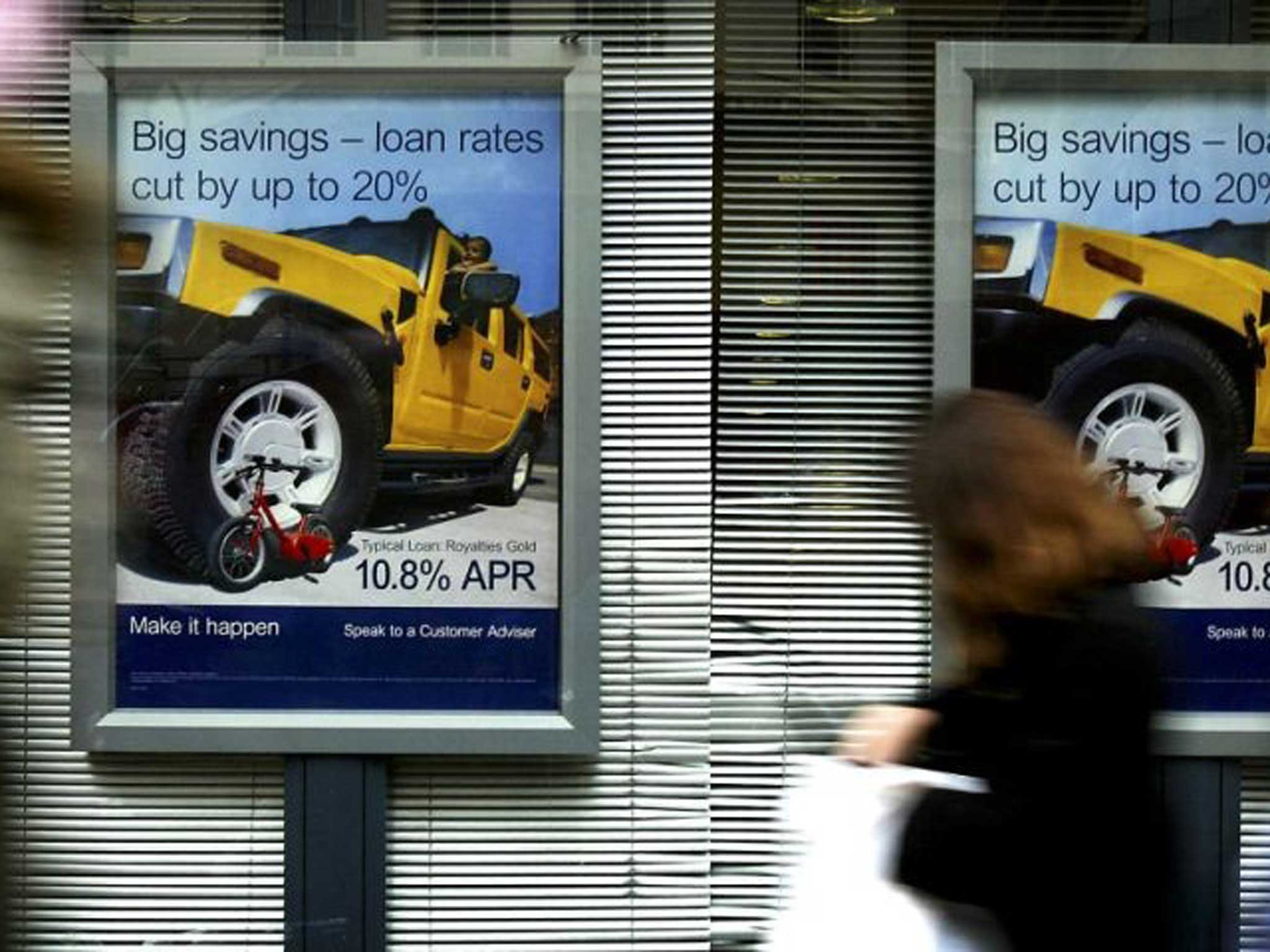Savvy Money: Hey, big borrower, the lenders have a keen interest in you
Banks and other providers are competing for the 'best buy' slot in providing sizeable loans

Your support helps us to tell the story
From reproductive rights to climate change to Big Tech, The Independent is on the ground when the story is developing. Whether it's investigating the financials of Elon Musk's pro-Trump PAC or producing our latest documentary, 'The A Word', which shines a light on the American women fighting for reproductive rights, we know how important it is to parse out the facts from the messaging.
At such a critical moment in US history, we need reporters on the ground. Your donation allows us to keep sending journalists to speak to both sides of the story.
The Independent is trusted by Americans across the entire political spectrum. And unlike many other quality news outlets, we choose not to lock Americans out of our reporting and analysis with paywalls. We believe quality journalism should be available to everyone, paid for by those who can afford it.
Your support makes all the difference.If you want to take out a personal loan, you could pay as little as 5 per cent interest. That's about the same as you'd be charged if you wanted a high loan-to-value mortgage.
But, depending on how much you want to borrow, you could also end up paying almost 30 per cent.
How come? It's not related to how good a credit risk you are (although you may pay a higher rate if you're a bad risk).
The difference in the interest rate is down to the provider and the amount you want to borrow.
Competition for customers
Banks and non-traditional providers, such as supermarket banks, peer-to-peer lenders and finance companies, are competing for customers who want to take out big loans – between £7,500 and £15,000. And currently there's a bit of a fight to get the "best buy" slot.
Best-buy large loans
The lowest interest rate I found when writing this was 4.7 per cent APR on loans between £7,500 and £15,000 from Zopa, the peer-to-peer lender.
But several other lenders have interest rates within a whisker of Zopa's. HSBC charges 4.8 per cent on loans between £7,000 and £15,000, while Sainsbury's Bank charges the same on loans between £7,500 and £15,000.
Personal loan rates at M&S Bank (wholly owned by HSBC) are a touch higher at 5 per cent if you want to borrow between £7,500 and £15,000.
The rates I've quoted are their "representative" APRs, which have to be given to 51 per cent of successful applicants.
If you don't have a good enough credit rating, you may be charged a higher rate of interest or be turned down for the loan.
High-street banks
It's a mixed picture with high-street banks. Barclays charges 5.1 per cent APR on loans between £7,500 and £15,000, while Santander's rate is 5.9 per cent for loans between £9,000 and £15,000 (borrow between £5,000 and £9,000 and you'll be charged 6.8 per cent). Lloyds and NatWest/Royal Bank of Scotland are more expensive at 6.4 per cent.
In Lloyds' case the 6.4 per cent rate kicks in at £7,000 and applies on loans up to £25,000. With NatWest/RBS it's on loans between £7,500 and £15,000.
Lloyds' best rate is 1 per cent cheaper than its sister bank Halifax.
Small loans, high interest
It's a different picture for smaller loans. Some providers don't lend less than £3,000 and some of those that do charge pretty chunky interest rates.
For example, Halifax charges 29.9 per cent representative APR on loans from £1,000 to £2,999.
With several other lenders you could pay between 18 and 22 per cent if you want a small loan.
Zopa is one of the few not to load the interest rate so dramatically.
If you borrow £2,000, you could pay between 8.4 per cent and 9.2 per cent, depending on how long you want the loan for.
Borrow more… pay less
If you want to take out a loan, it's definitely worth checking individual lenders' thresholds to see if you would qualify for a lower interest rate if you borrowed a little more.
If you're very disciplined, have an excellent credit rating and don't have much other borrowing, you could even apply to borrow a lot more than you need (say, £7,500 if you're looking for a £3,000 loan), and pay back what you don't need.
I've checked with several lenders and they say this won't break any rules and you would still keep the lower interest rate that applies to the original, larger loan.
In terms of overpaying, the rules say you can pay back up to £8,000 a year on loans taken out after February 2011 and, as long as you tell the lender in advance, you'll only have to pay an early payment charge of 1 per cent of the amount you've repaid. Some lenders won't charge at all.
Responsible borrowing
Please note, I'm not in favour of borrowing more than you need as a rule and I'd always recommend paying off personal borrowing as quickly as you can.
Borrowing a lot more only works if you pay back the extra you've borrowed almost immediately (check with the lender as you may have to wait 30 days to do this).
But when the pricing of loans is frankly incomprehensible, it could be a savvy move.
Join our commenting forum
Join thought-provoking conversations, follow other Independent readers and see their replies
Comments